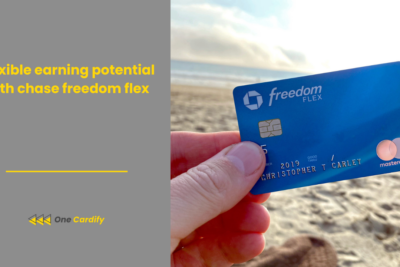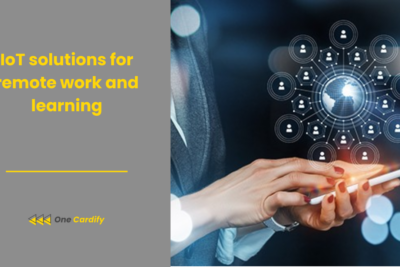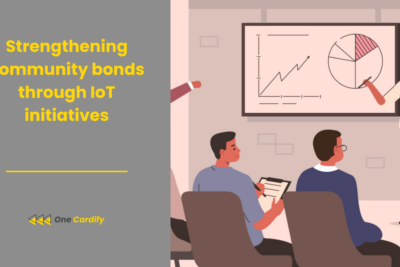
IoT for interactive and immersive learning
In this dynamic environment of education, the use of Internet of Things (IoT) for interactive and immersive learning has brought a whole new dimension to our relationship with knowledge. This evolution goes beyond usual means, promoting a dynamic setting in which technology is used to boost comprehension and memory.The implementation of the IoT in education brings a variety of smart devices and systems, the possibility of personalized learning experiences, instant feedback, and a deeper understanding of the educational content. The possibilities of IoT for an exciting, efficient, and open learning journey are explored in this post.Discover the ways in which IoT is revolutionizing education from intelligent classrooms to virtual labs and how it is molding the future of learning. Unearth the infinite potential of IoT-enabled learning environments for educators and students.
Unleashing the Potential of IoT in Education
The establishment of the Internet of Things in the learning sector marks a new age of learning, which is not bound by books and chalkboards. It is the perfect combination of physical and virtual environments, where smart devices and IoT infrastructure are integrated to create a conducive learning environment.The use of IoT in the context of interactive and immersive learning provides not only enrichment of the teaching methodology but also stimulates students’ engagement and motivation. Adaptive learning systems, wearable technology, and intelligent connected classrooms deliver individualized learning based on the student’s strength and weaknesses.The introduction of IoT devices everywhere gives learners continuous access to educational resources enabling learning to be carried outside the classroom. This access is most beneficial for distant learners and people having disabilities, making education equal for all.In addition, IoT in education enforces practical learning. Some abstractions that were difficult to understand can now be interfaced and experienced with IoT-powered augmented reality (AR) and virtual reality (VR). These technologies convert learning from being a passive activity into an active and involving one.
Related content
Smart Classrooms: The Heart of IoT-Driven Learning
Smart classrooms are the heart of IoT-based learning. Containing smart boards, IoT sensors, and real-time data analysis tools, these classrooms are an adaptive learning environment tailored to the needs of the students.Teachers are able to track the progress of students in real-time and thereby, provide quick feedback and adjust their teaching strategies. In addition, learning styles are supported in IoT-enabled classrooms, so that visual, auditory and kinesthetic learners may also benefit from the curriculum.The smart devices also encourage teamwork between students, irrespective of their location, same class or a thousand miles away. IoT extends the borders of the classroom, enabling global educational experiences and intercultural communication.With the help of environmental sensors and automated systems, the class is maintained in optimal condition in terms of lighting, air quality, temperature, minimizing disturbance and generating a perfect learning environment.
Case Studies: Success Stories of IoT in Education
A number of institutions have already started using the potential of IoT for improved learning experiences. One of the U.S.-based colleges executed a campus-wide IoT program that gave significant improvement in the area of campus security, energy management, and tailored coursework for students.For example, a school in Asia implemented IoT-enabled AR and VR laboratories, which provided the students with the possibility to carry out experiments and to investigate complex scientific concepts in a virtual environment. This added some fun to the learning process and made it safer and easy to learn at an individual pace.A European primary school that introduces wearable devices for students and staff in promoting health and wellness has achieved remarkable results in terms of improved student engagement and participation.These examples outline the revolutionary effect of IoT on the educational skyline, offering a sneak peek into a future where learning is boundless, appealing, and custom made for each learner.
Navigating Challenges: Privacy, Security, and Equity
Although, the merits of IoT in the field of the education are various, certain issues that are related to data privacy, security, and access equity need to be sorted out. Safety of student data and unauthorized access prevention are among the main concerns for the schools that implement the IoT solutions.In addition, the digital divide gives a great deal of trouble to IoT learning. The provision of technology as well as internet connectivity to all students is important to prevent educational inequalities.Nonetheless, with the help of strategic development, investments in strong security systems, and bridging the digital gap, these challenges can be handled successfully and the future is the era of the IoT based education for all.
Revolutionizing Education: A Call to Action
The future of education is an environment where learners interact with the environment. It is empowered by the technological revolution, what makes learning process to be active and interactive for both educators and students.In the future, when we are having our sight on the future, it is important for educational institutions, policymakers and technology providers to work together to use the potential of IoT in a right way. When working together, we can provide appropriate training environment for modern learners that is inclusive, engaging and effective.Ready to get involved in this educational revolution? The process of revolutionizing the education by means of the IoT begins with the awareness of its possibilities and the conscious steps of incorporating it into our educational environments.
Yes, IoT devices offer dynamic and flexible education solutions that can be tailored to learners of all ages, adapting to different learning styles and needs.
IoT allows for the collection and analysis of data on students' learning habits and preferences, enabling educators to tailor the learning experience to each student's needs.
Yes, as with any technology that collects and stores data, there are potential privacy and security risks. However, these can be mitigated with proper security measures and protocols.
Absolutely, IoT technology can facilitate remote learning and provide access to educational resources for students who cannot physically attend classes, including those with disabilities.
IoT enables connectivity between devices and platforms, allowing students and teachers to collaborate in real-time, regardless of their physical location.
AR and VR, powered by IoT, provide immersive learning experiences, making abstract concepts tangible and engaging through visualization and interaction.
Overcoming the digital divide requires investment in infrastructure, affordable technology, and policies that ensure equitable access to IoT-enabled learning resources for all students.
Empowering the Future of Education through IoT
IoT in education brings with it the world of interactive learning, where some possibilities are made reality. We can address this technological revolution by developing learning environments which not only are more interactive and productive but also open to all.On this journey, all challenges must be faced, making sure that the advantages of IoT-based learning can be attained without sacrificing the security and privacy of learners.IoT holds the future in education. Are you ready to begin this life changing voyage? To tap into the power of IoT would result in a new interactive, immersive, and inclusive education paradigm that will go down generations.Embrace the revolution.Empower the future.






Related Posts